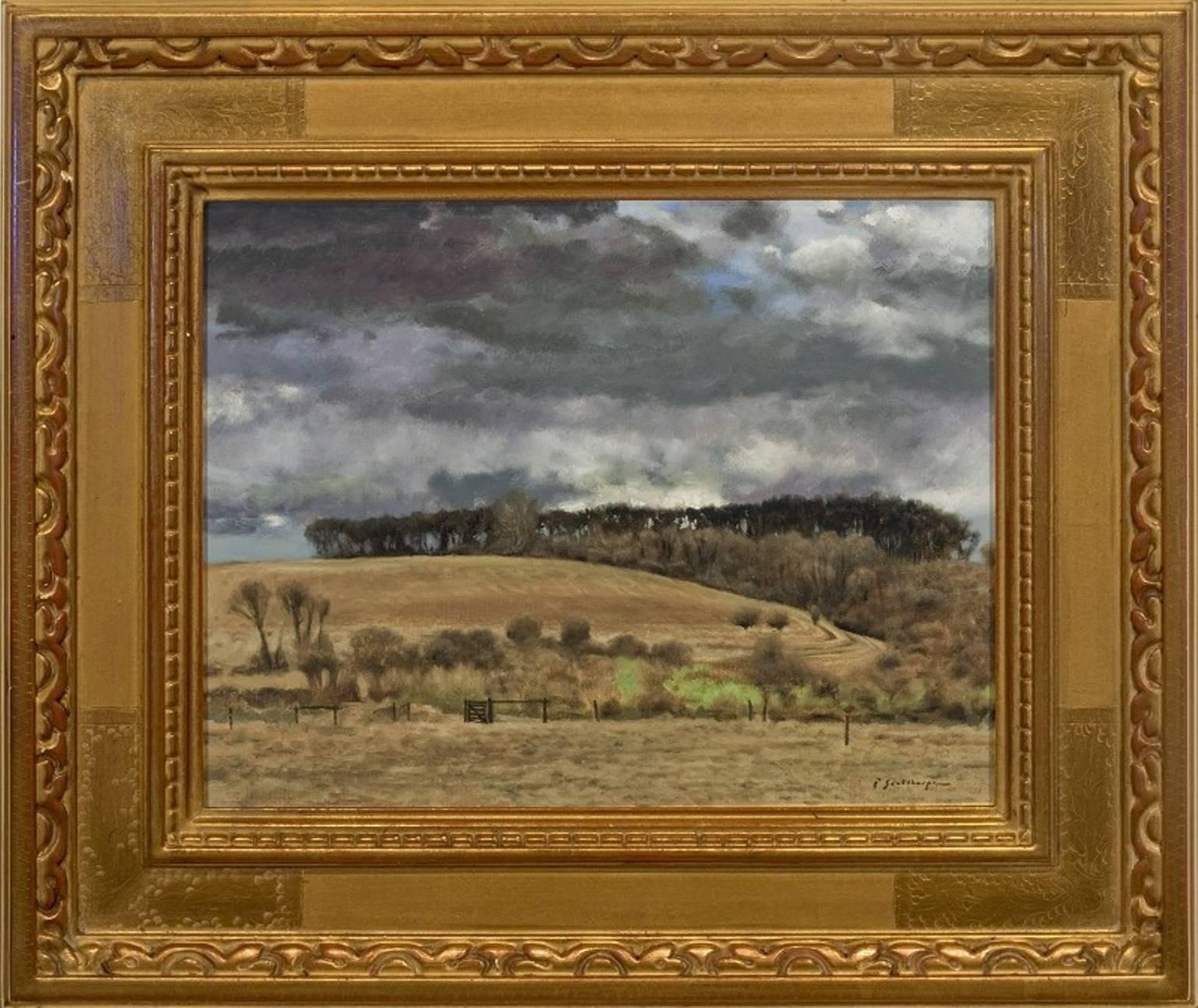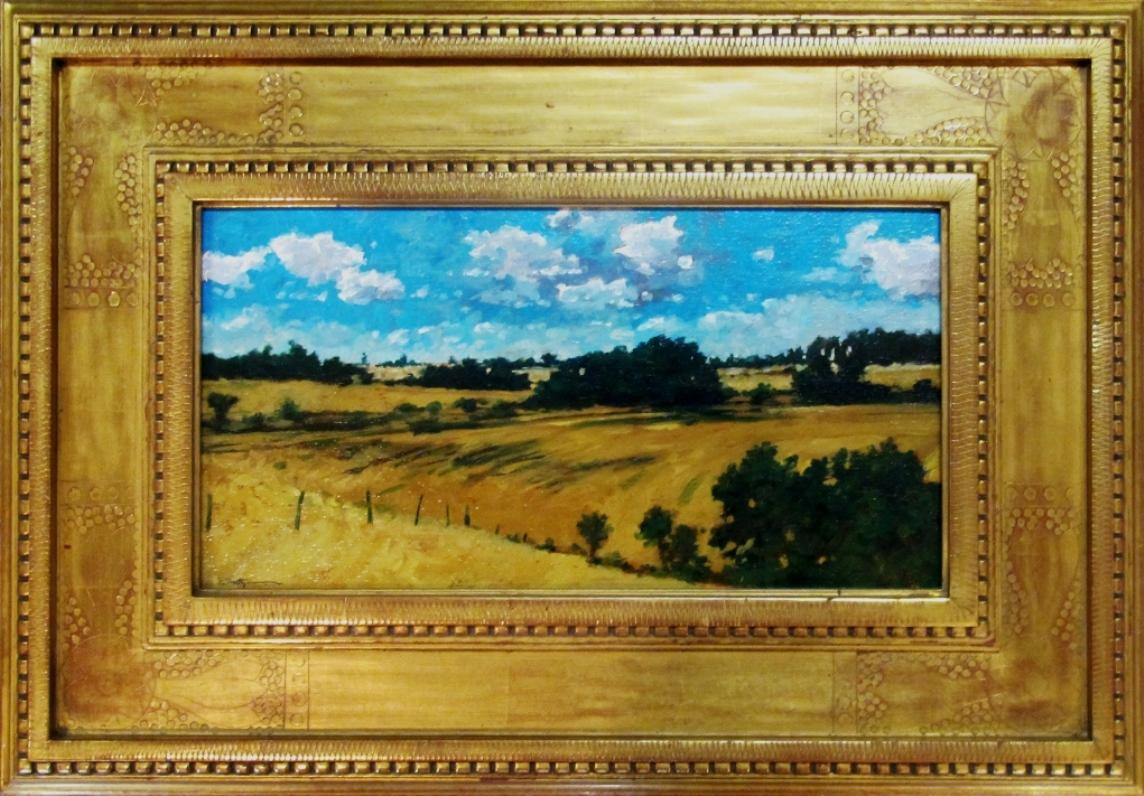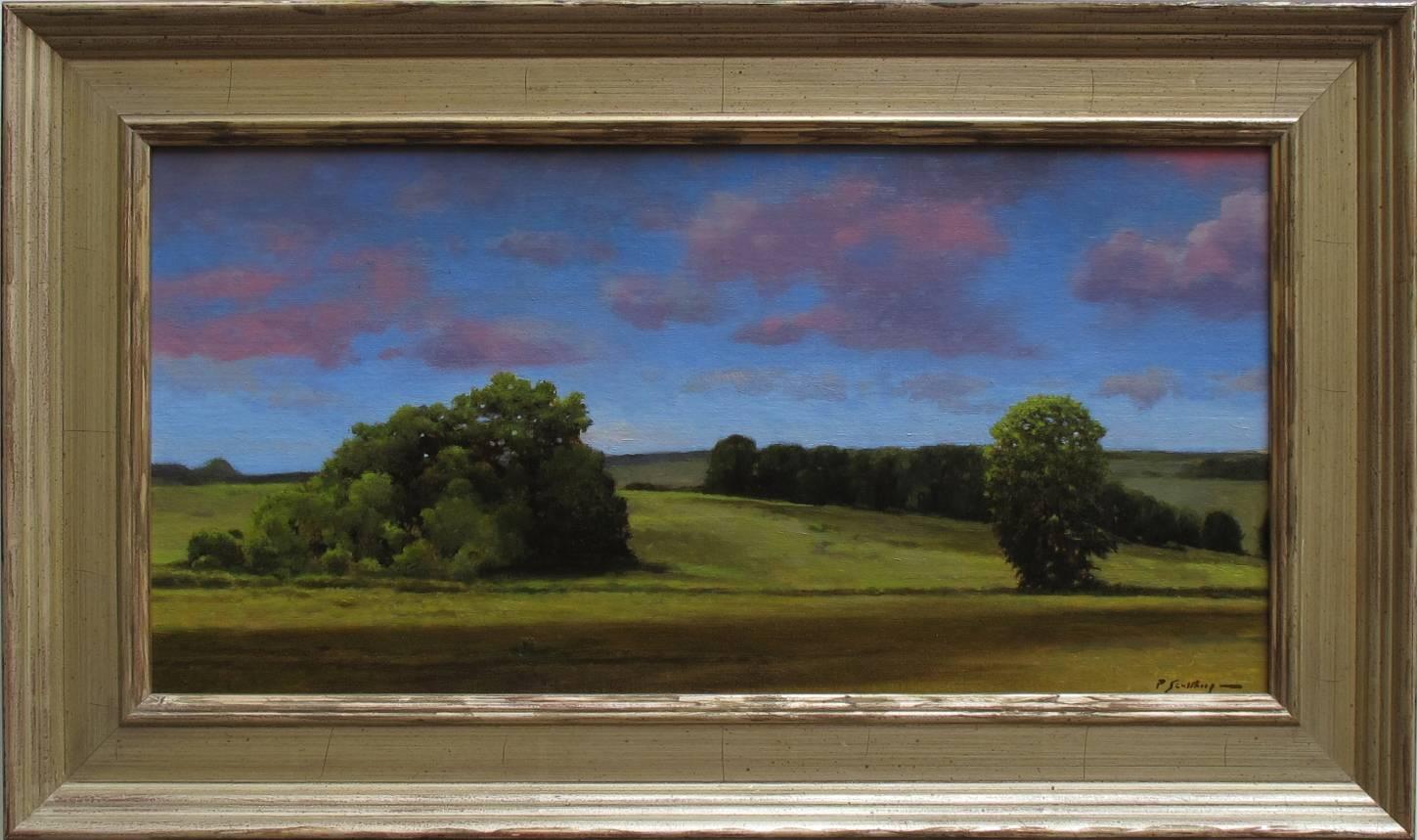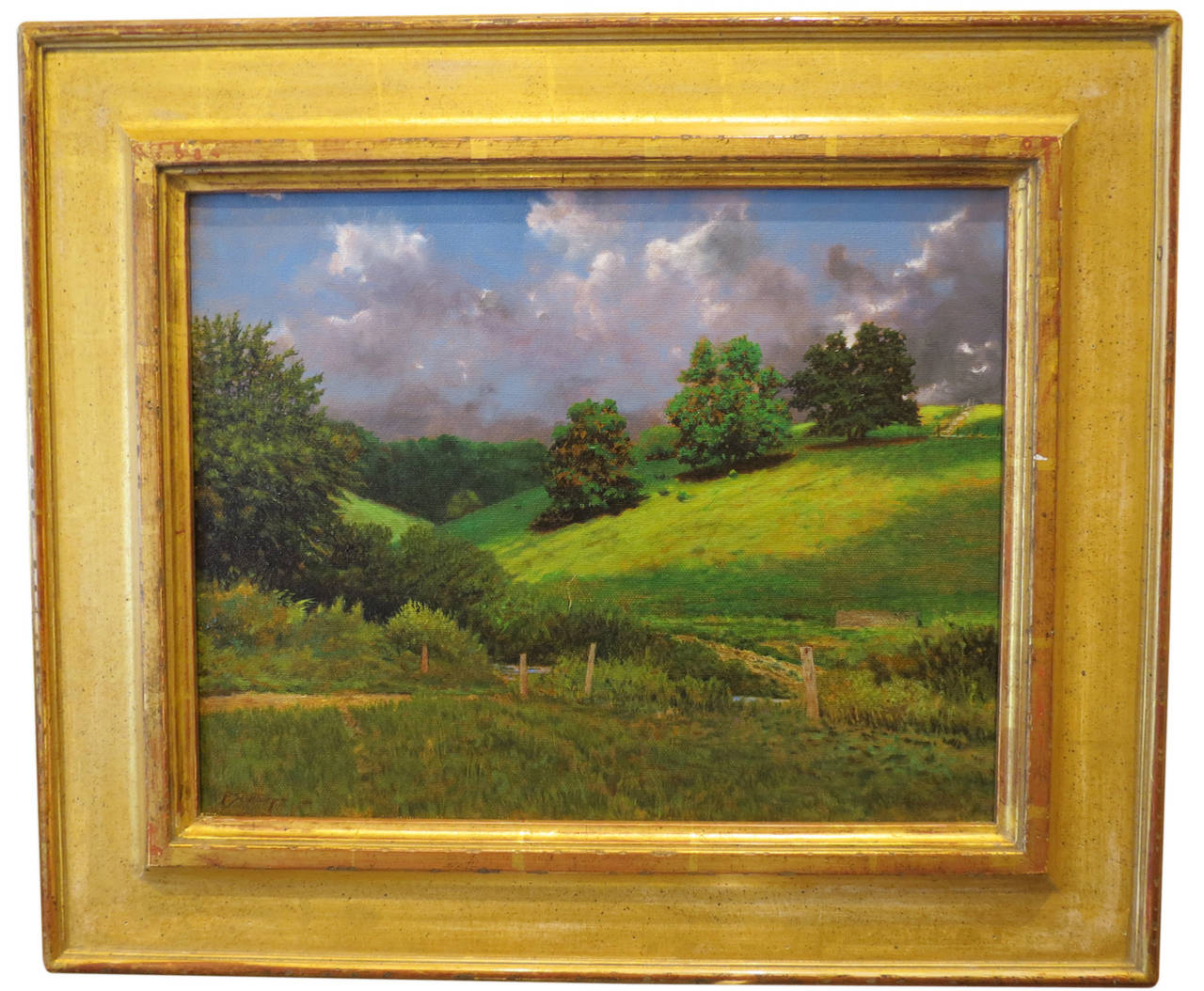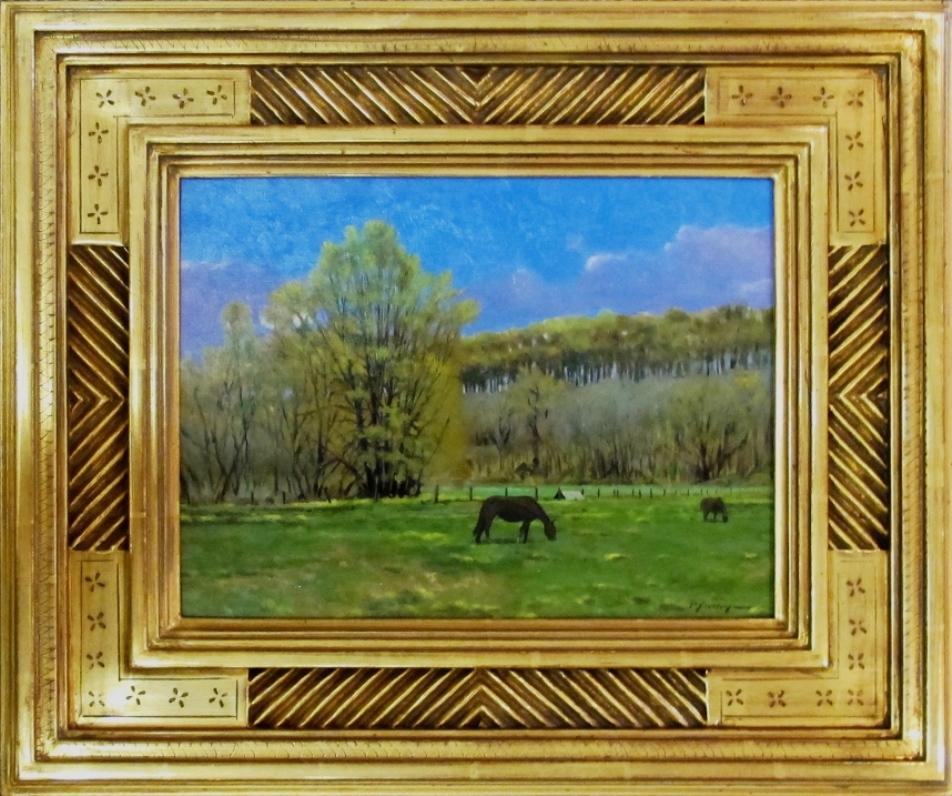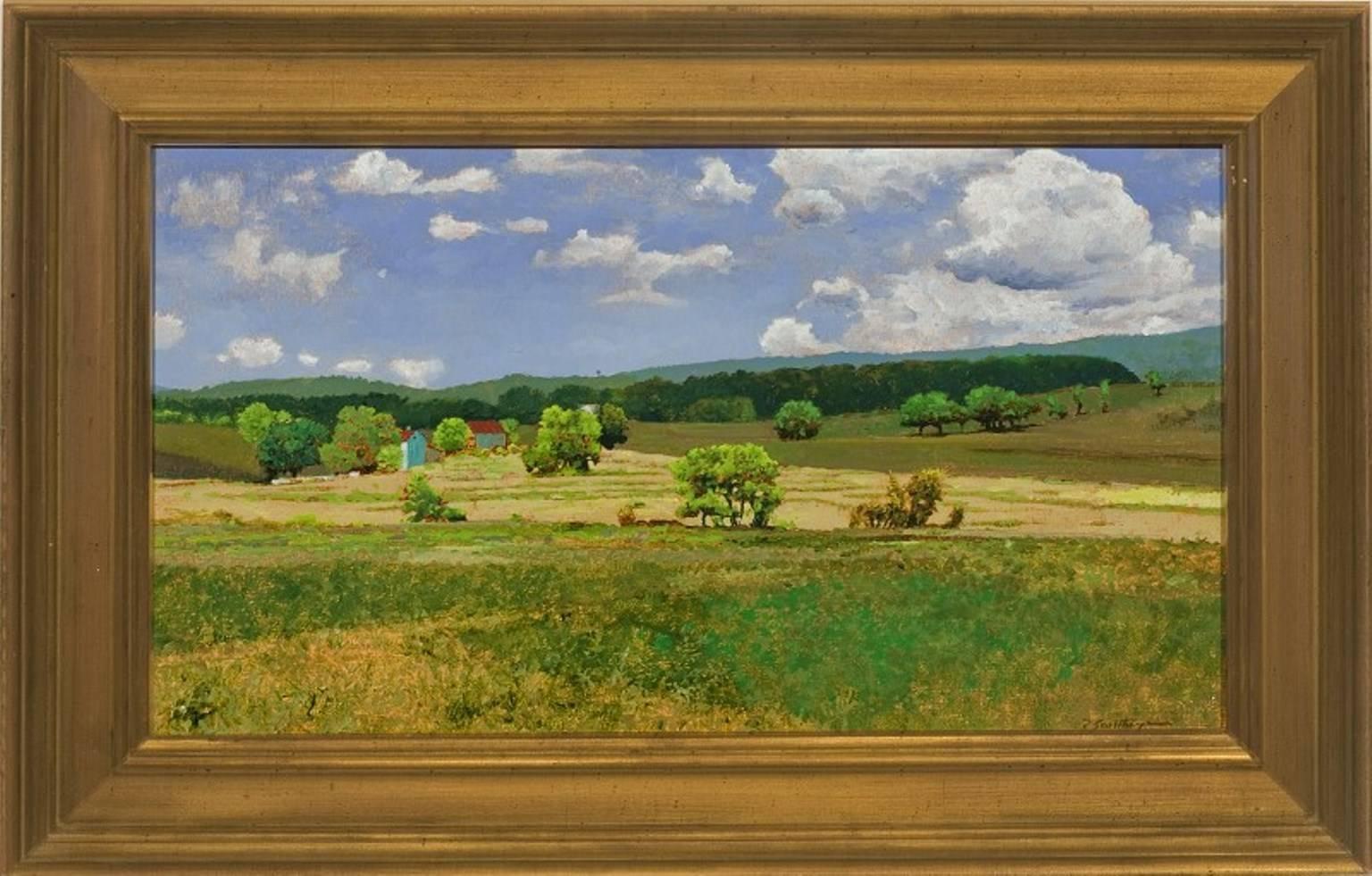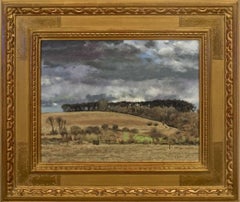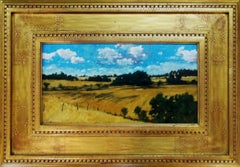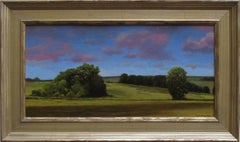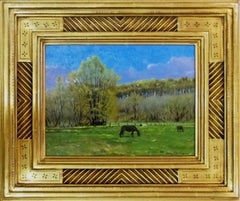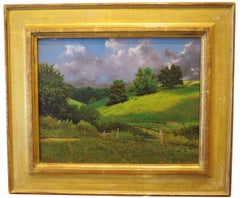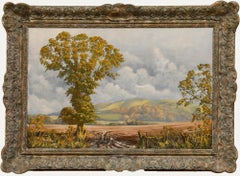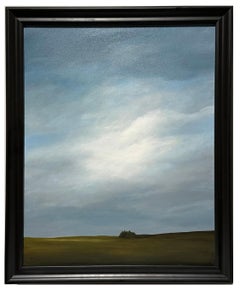Want more images or videos?
Request additional images or videos from the seller
1 of 6
Peter Sculthorpe"Clouds for Autumn"
$9,950
£7,714.93
€8,754.04
CA$14,262.90
A$15,508.87
CHF 8,171.66
MX$188,387.77
NOK 102,734.27
SEK 96,305.08
DKK 65,691.43
About the Item
Jim’s of Lambertville is proud to offer this artwork by:
Peter Sculthorpe (born 1948)
Peter Sculthorpe was born in Ontario, Canada, in 1948. His talent was evident even as a child and developed rapidly in high school, where he was awarded an art scholarship in his senior year. He studied at the Pennsylvania Academy of Fine Arts, and the Hussian School of Fine Art under William Palmer Lear. He is a recipient of the Daisy Jamison Art Scholarship.
Sculthorpe's work is represented in private and corporate collections including General Electric, AT&T, DuPont, and Nabisco. His paintings are in the permanent collections of the Delaware Art Museum in Wilmington, Delaware; the William Penn Art Museum in Harrisburg, Pennsylvania; and the Brandywine River Museum in Chadds Ford, Pennsylvania.
He has presented his work in exhibitions including the American Watercolor Society, the National Academy of Design in New York, the Philadelphia Sketch Club, the American Artists Professional League, and Watercolor USA.
Among the awards he has received for his watercolors and oils are the American Artists Professional League Award in New York and an award from the Philadelphia Sketch Club.
- Creator:Peter Sculthorpe (1948, American)
- Dimensions:Height: 16 in (40.64 cm)Width: 19 in (48.26 cm)Depth: 2 in (5.08 cm)
- Medium:
- Movement & Style:
- Period:
- Condition:
- Gallery Location:Lambertville, NJ
- Reference Number:Seller: JOL041818011stDibs: LU3743616182
About the Seller
5.0
Vetted Professional Seller
Every seller passes strict standards for authenticity and reliability
Established in 1997
1stDibs seller since 2014
39 sales on 1stDibs
Typical response time: 1 to 2 days
- ShippingRetrieving quote...Shipping from: Lambertville, NJ
- Return Policy
Authenticity Guarantee
In the unlikely event there’s an issue with an item’s authenticity, contact us within 1 year for a full refund. DetailsMoney-Back Guarantee
If your item is not as described, is damaged in transit, or does not arrive, contact us within 7 days for a full refund. Details24-Hour Cancellation
You have a 24-hour grace period in which to reconsider your purchase, with no questions asked.Vetted Professional Sellers
Our world-class sellers must adhere to strict standards for service and quality, maintaining the integrity of our listings.Price-Match Guarantee
If you find that a seller listed the same item for a lower price elsewhere, we’ll match it.Trusted Global Delivery
Our best-in-class carrier network provides specialized shipping options worldwide, including custom delivery.More From This Seller
View All"Skies of Autumn"
By Peter Sculthorpe
Located in Lambertville, NJ
Jim’s of Lambertville is proud to offer this artwork.
Signed lower right.
Complemented by a hand carved and gilt frame.
Peter Sculthorpe (b. 1948)
Peter Sculthorpe was born in O...
Category
21st Century and Contemporary American Realist Landscape Paintings
Materials
Canvas, Oil
"Summer Skies"
By Peter Sculthorpe
Located in Lambertville, NJ
Jim’s of Lambertville is proud to offer this artwork by:
Peter Sculthorpe (born 1948)
Peter Sculthorpe was born in Ontario, Canada, in 1948. His talent was evident even as a child and developed rapidly in high school, where he was awarded an art scholarship in his senior year. He studied at the Pennsylvania Academy of Fine Arts, and the Hussian School of Fine Art under William Palmer Lear. He is a recipient of the Daisy Jamison Art Scholarship.
Sculthorpe's work is represented in private and corporate collections including General Electric, AT&T, DuPont, and Nabisco. His paintings are in the permanent collections of the Delaware Art Museum in Wilmington, Delaware; the William Penn Art Museum in Harrisburg, Pennsylvania; and the Brandywine River Museum in Chadds Ford, Pennsylvania.
He has presented his work in exhibitions including the American Watercolor Society, the National Academy of Design in New York, the Philadelphia Sketch...
Category
21st Century and Contemporary American Impressionist Landscape Paintings
Materials
Oil, Board
"Big Sky"
By Peter Sculthorpe
Located in Lambertville, NJ
Jim’s of Lambertville is proud to offer this artwork.
Signed lower right.
Peter Sculthorpe (b. 1948)
Peter Sculthorpe was born in Ontario, Canada, in 1948. His talent was evide...
Category
21st Century and Contemporary American Realist Landscape Paintings
Materials
Oil, Board
$14,375
"Lou's Meadow"
By Peter Sculthorpe
Located in Lambertville, NJ
Jim’s of Lambertville is proud to offer this artwork by:
Peter Sculthorpe (born 1948)
Peter Sculthorpe was born in Ontario, Canada, in 1948. His talent was evident even as a chi...
Category
21st Century and Contemporary American Impressionist Landscape Paintings
Materials
Masonite, Oil
"Near Paris, Virginia"
By Peter Sculthorpe
Located in Lambertville, NJ
Jim’s of Lambertville is proud to offer this artwork.
Signed lower right.
Complemented by a hand carved and gilt frame.
Peter Sculthorpe (b. 1948)
Peter Sculthorpe was born in ...
Category
21st Century and Contemporary American Realist Landscape Paintings
Materials
Oil, Board
"Elkins Valley - Elkins Farm, King Ranch"
By Peter Sculthorpe
Located in Lambertville, NJ
Jim’s of Lambertville is proud to offer this artwork.
Signed lower right.
Complemented by a hand carved and gilt frame.
Peter Sculthorpe (b. 1948)
Peter Sculthorpe was born in ...
Category
21st Century and Contemporary American Realist Landscape Paintings
Materials
Linen, Oil
You May Also Like
"Afternoon Storm"
By Peter Sculthorpe
Located in Lambertville, NJ
Signed LL & on Verso: Signed, Dated, Attributed
Peter Sculthorpe was born in Ontario, Canada, in 1948 of dual US-Canadian citizenship. His talent was evident even as a child and at age 12 he first studied art with his uncle, Gordon Peters, a renowned Canadian painter. Sculthorpe's Father, an insurance executive was transferred from Toronto to Philadelphia in1962 and it was while in high school that he developed rapidly, was recognixed by a local artist - watercolorist Philip Jamison...
Category
21st Century and Contemporary Landscape Paintings
Materials
Linen, Oil
Donald Ayres (b.1936) - 20th Century Oil, The Hills in Autumn
By Donald Ayres
Located in Corsham, GB
This serene landscape painting captures a bucolic countryside scene, with a majestic golden-leafed tree dominating the foreground against a backdrop of rolling hills and a cloudy sky...
Category
20th Century Landscape Paintings
Materials
Oil
October Field, South of Peoria - Cloudy Skies, Original oil painting
By Ahzad Bogosian
Located in Chicago, IL
Ahzad Bogosian
October Field, South of Peoria, 2021
oil and acrylic on canvas
20h x 16w in
50.80h x 40.64w cm
AZB128
Ahzad Bogosian
SOLO EXHIBITIONS
2025 Ahzad Bogosian, Gallery V...
Category
2010s Landscape Paintings
Materials
Canvas, Oil, Acrylic
Impressionistic Autumn Landscape Oil Painting Michael Budden Early Autumn Farm
By Michael Budden
Located in Chesterfield, NJ
Early Autumn Farm
oil on canvas/panel
10 x 16 image size unframed, 15.38 x 21.38 x 1 framed
Early Autumn Farm is a beautiful impressionistic landscape oil painting that I did on loca...
Category
21st Century and Contemporary Impressionist Landscape Paintings
Materials
Oil
Autumn Day II, Suzanne Winn, Original Landscape Skyscape Painting, Affordable
By Suzanne Winn
Located in Deddington, GB
Autumn Day II by Suzanne Winn [2021]
original
Oil on canvas
Image size: H:30 cm x W:40 cm
Complete Size of Unframed Work: H:30 cm x W:40 cm x D:1cm
Framed Size: H:37 cm x W:47 cm...
Category
21st Century and Contemporary Impressionist Landscape Paintings
Materials
Canvas, Oil
"November" Bruce Crane, Tonalism Landscape Autumn Scene, American Impressionism
By Bruce Crane
Located in New York, NY
Bruce Crane (1857 - 1937)
November
Oil on canvas
25 x 30 inches
Signed lower right
Robert Bruce Crane was an American painter. He joined the Lyme Art Colony in the early 1900s. His ...
Category
Early 20th Century Tonalist Landscape Paintings
Materials
Canvas, Oil
More Ways To Browse
David Shingler
Dutch Village Painting
E Martin Hennings
Edith White Still Life Painting
Empire State Building Painting
Estes Park
Garden Of The Gods
Gerald Harvey Jones
Gerald Harvey
Gregory West
Gulf Coast Paintings
Hampstead Heath
Hay Bales Painting
Henri Hayden
Heydenryk Frames
Hound Fox Hunting
Impressionist Farm Barn Painting
Indian Painting Signed
